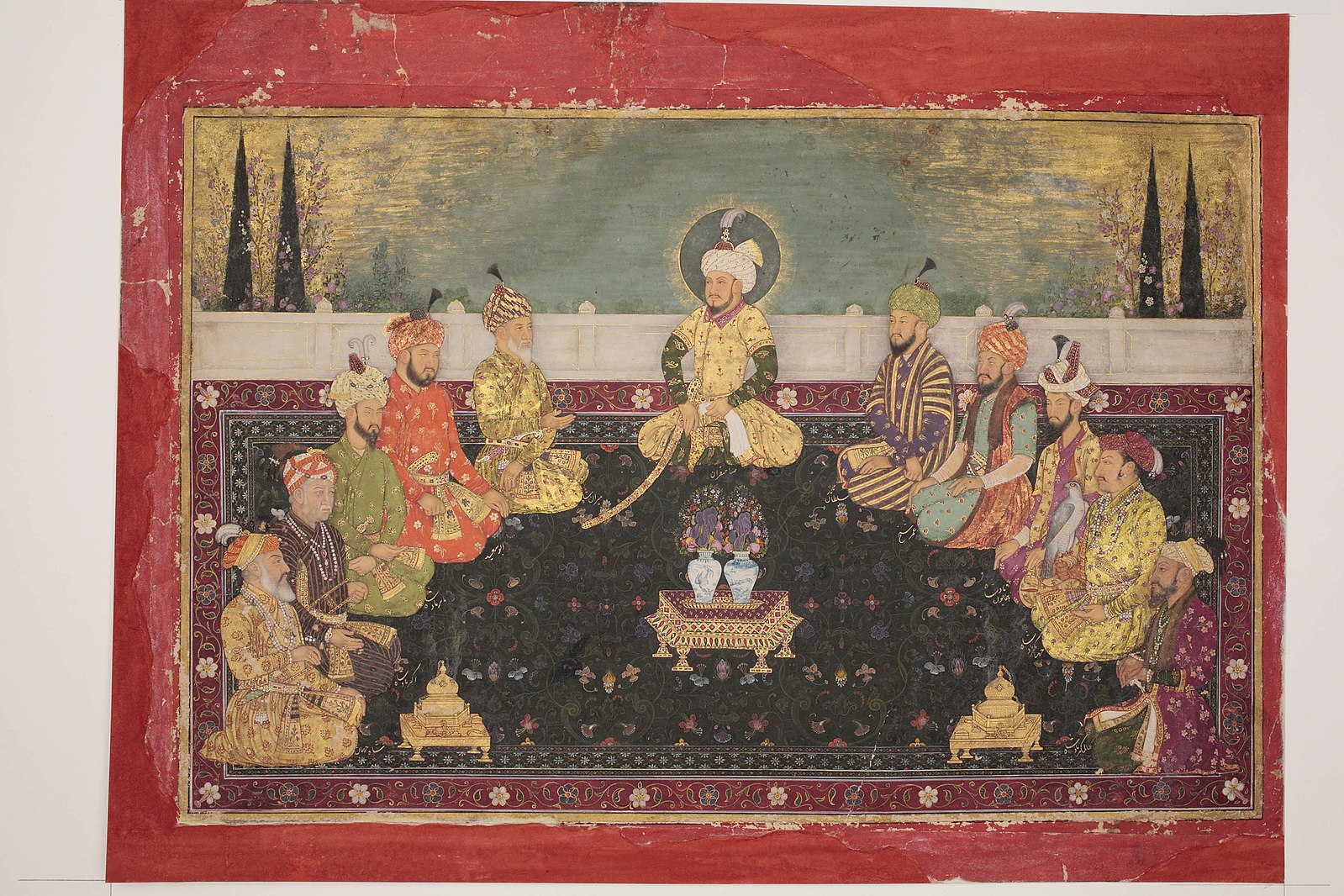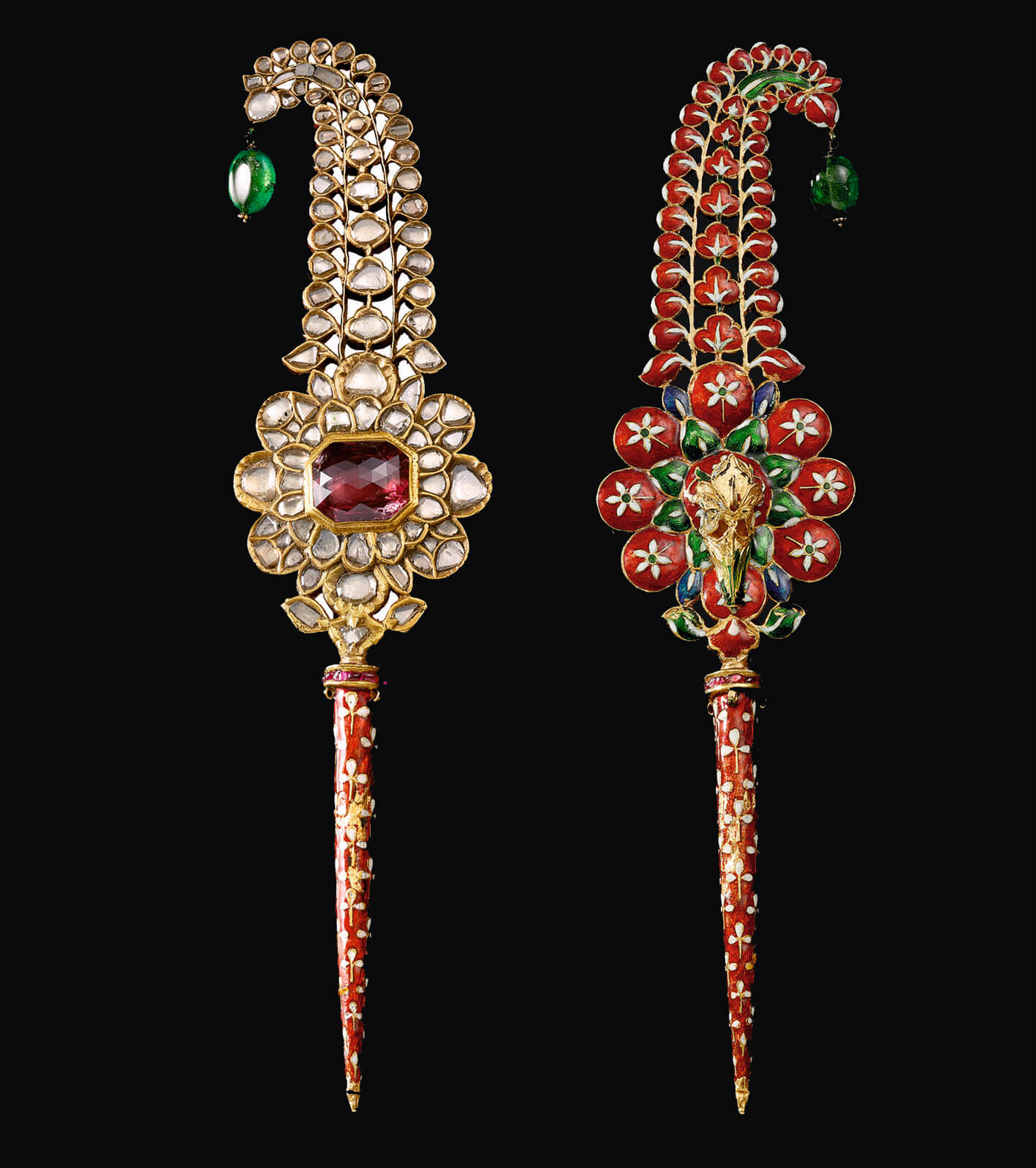The Mughal Jigha
Power, Craft, and Global Exchange
An emerald from Colombia. A ruby from Burma. A spinel from Afghanistan. Gold shaped by a Persian-trained craftsman in India. These materials, gathered from far corners of the world, came together in a single Mughal turban ornament known as the jigha—a plume of gemstones that reflected the reach of empire through the language of craft.

In the Mughal court, the jigha marked distinction. It was worn by emperors, princes, and courtiers, each piece built from stones that had already lived long histories. Colombian emeralds arrived on Portuguese ships. Rubies and spinels traveled from Burma and Badakhshan through Central Asia by caravan. Diamonds came from the Deccan. By the time these materials reached the imperial ateliers of Lahore or Agra, they had passed through many hands and many forms of trade.
One example in the Metropolitan Museum of Art, made in the late seventeenth century, reveals the complexity of this world. Set in high-karat gold and enameled on the reverse, the ornament hides its most intricate work against the skin. The visible surface declares wealth and authority; the hidden one reflects intimacy and skill. The jigha was both ornament and archive—recording routes, techniques, and encounters that made its existence possible.
The Mughal court drew together craftsmen from across Asia: Persian enamelists, Gujarati stone-setters, Central Asian goldsmiths, and more. Under Akbar and Shah Jahan, imperial workshops became centers of experimentation where methods were exchanged and adapted. What emerged was not imitation but synthesis—new forms shaped by the meeting of regional traditions.
The Mughals showed how luxury is built through collaboration. Long before European ateliers defined global style, the Mughal court had already set its own standards of refinement. A jigha carried the marks of many makers, each leaving a trace within a shared vision of artistry.
To hold such a piece today is to feel the evidence of connection—stones and metals that crossed continents to be joined by human hands. The jigha speaks of beauty as a form of exchange, and of craftsmanship as a record of movement through the world.

